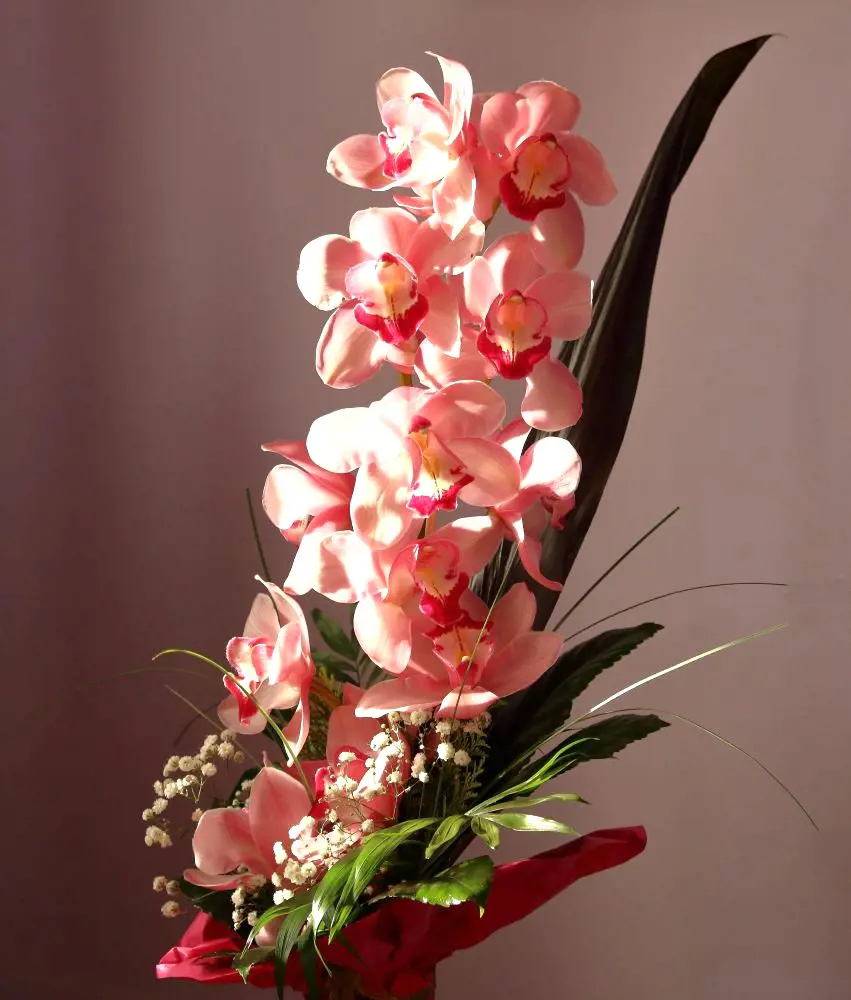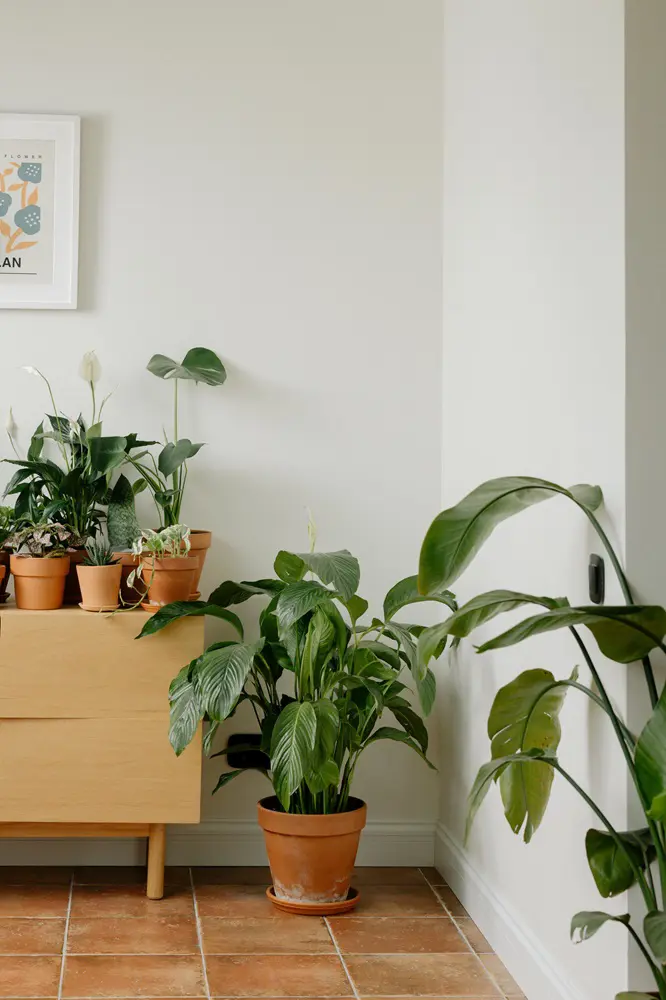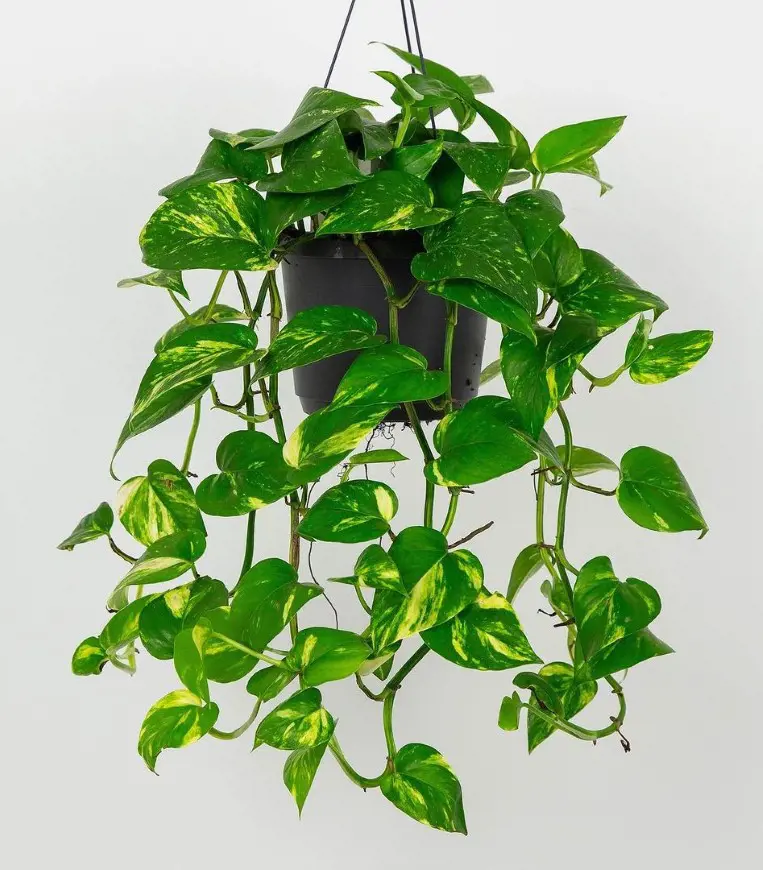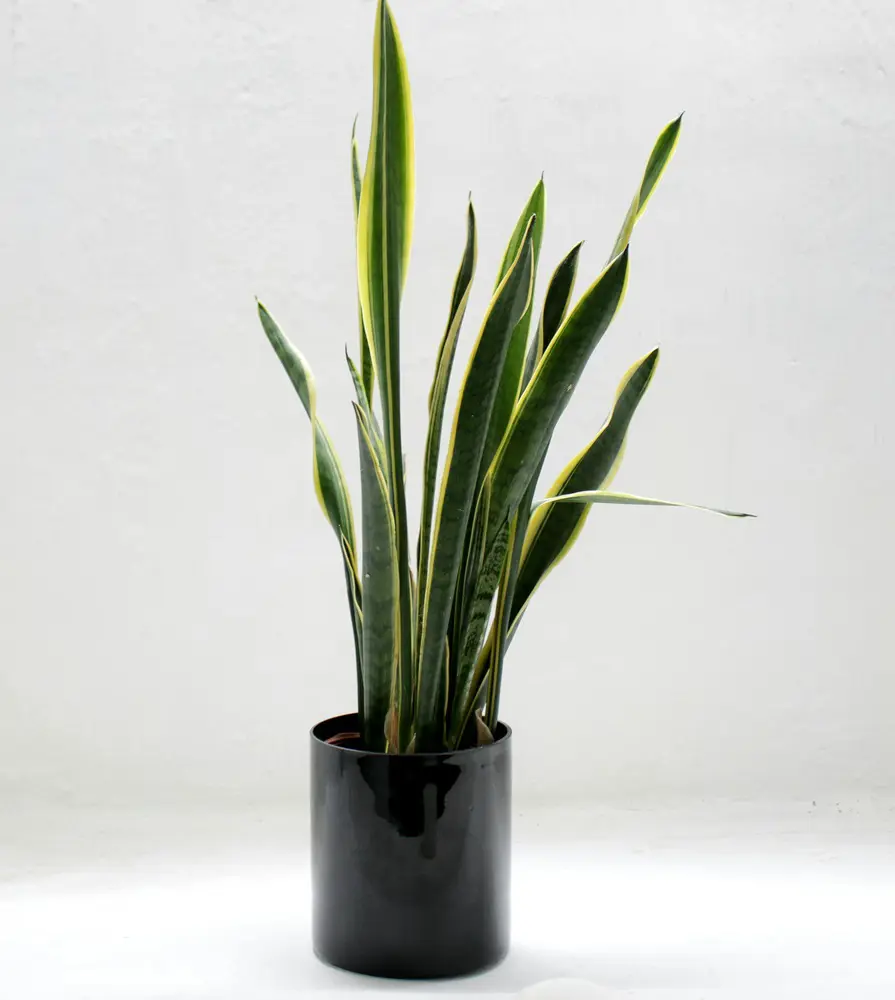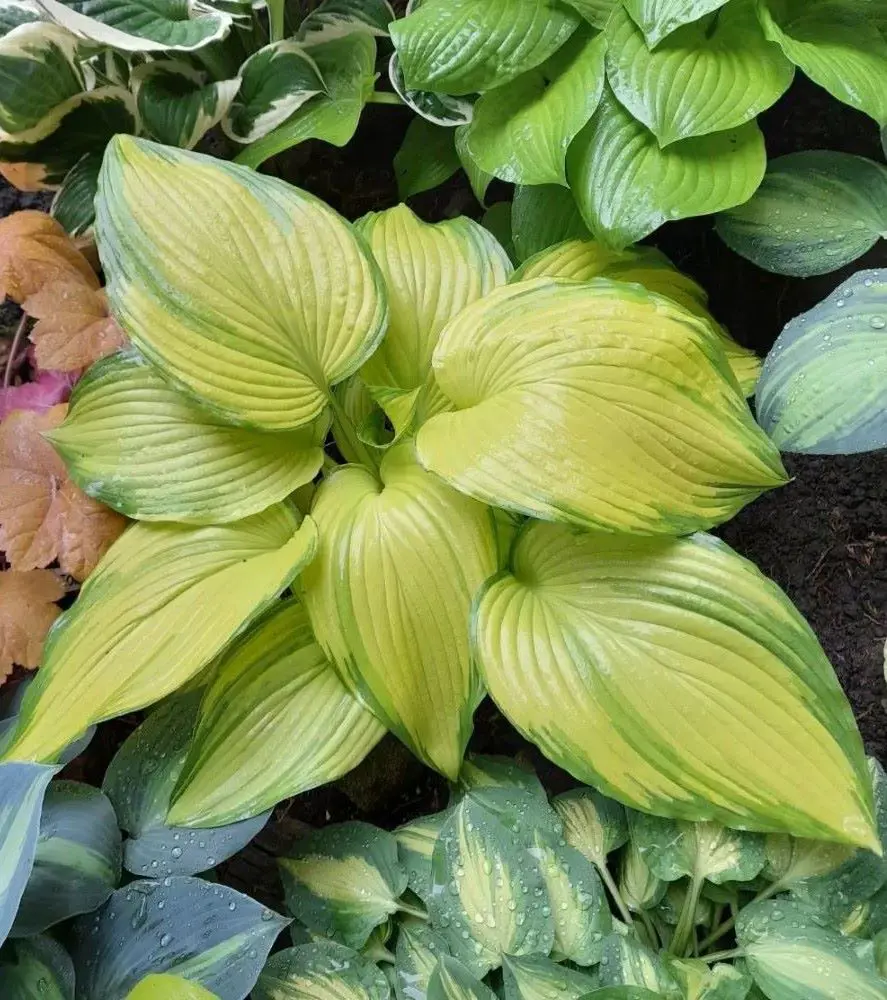Aloe Vera Plant Care Tips For Indoors and Outdoors
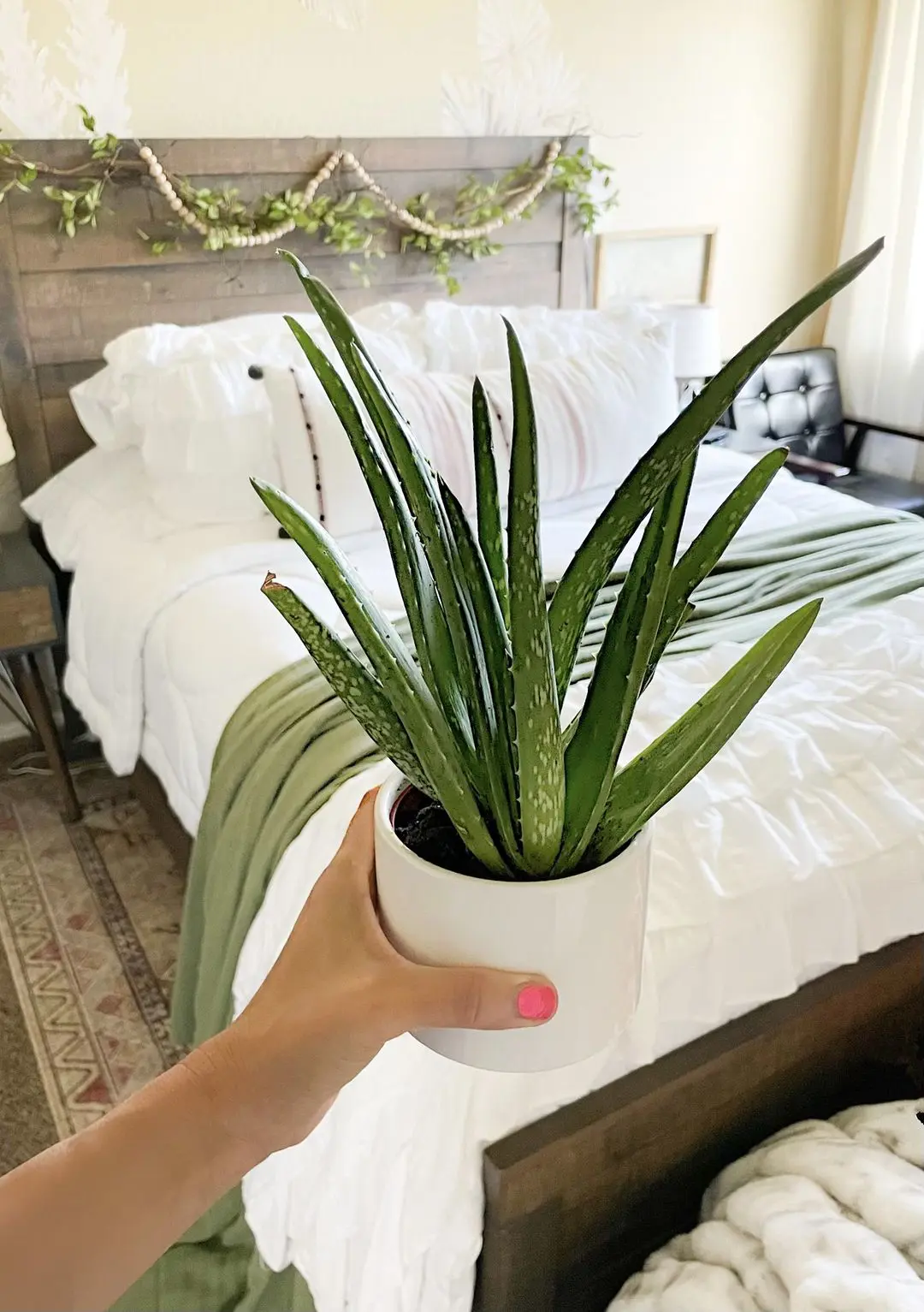
This post may contain affiliate links. If you make a purchase through links on our site, we may earn a commission.
Aloe vera is a succulent superstar that's as easy to care for. This spiky wonder thrives both indoors and outdoors, offering a touch of desert beauty to your home while providing a handy source of soothing gel for burns, cuts, and sunburns.
Whether you're a seasoned plant parent or a complete newbie, aloe vera is a fantastic choice. But to keep your spiky friend happy and healthy, there are a few key things to know about its indoor and outdoor needs.
How to Take Care of Aloe Vera Plant?
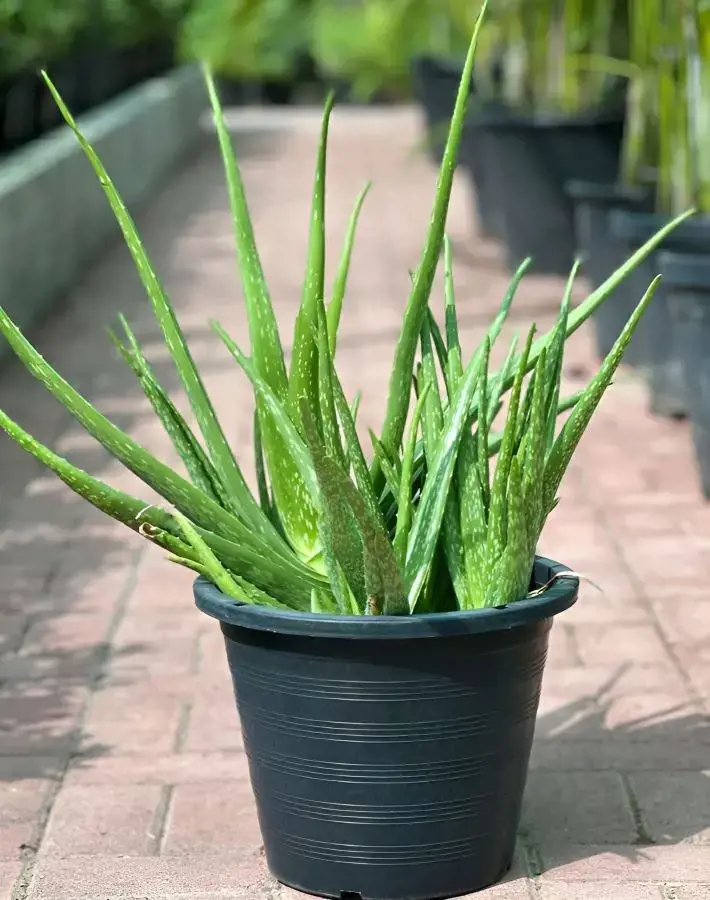
You can take care of aloe vera by following the guidelines mentioned below. But before that, here is a brief introduction to aloe vera. The aloe vera is a succulent plant that thrives in hot, dry climates.
It was native to the Arabian Peninsula but is now found in tropical and subtropical regions around the world. It's a short-stemmed shrub with thick, fleshy, green leaves that grow in a rosette shape, storing water to survive in arid conditions.
Aloe vera is most well-known for the clear gel contained within its leaves, which has been used for centuries for its medicinal properties. This gel is rich in vitamins, minerals, and antioxidants and is commonly used to soothe sunburns, burns, cuts, and other skin irritations.
Since aloe vera can be grown both indoors and outdoors, taking care of it involves:
- Indoor care
- Outdoor care
Aloe Vera Care Indoor
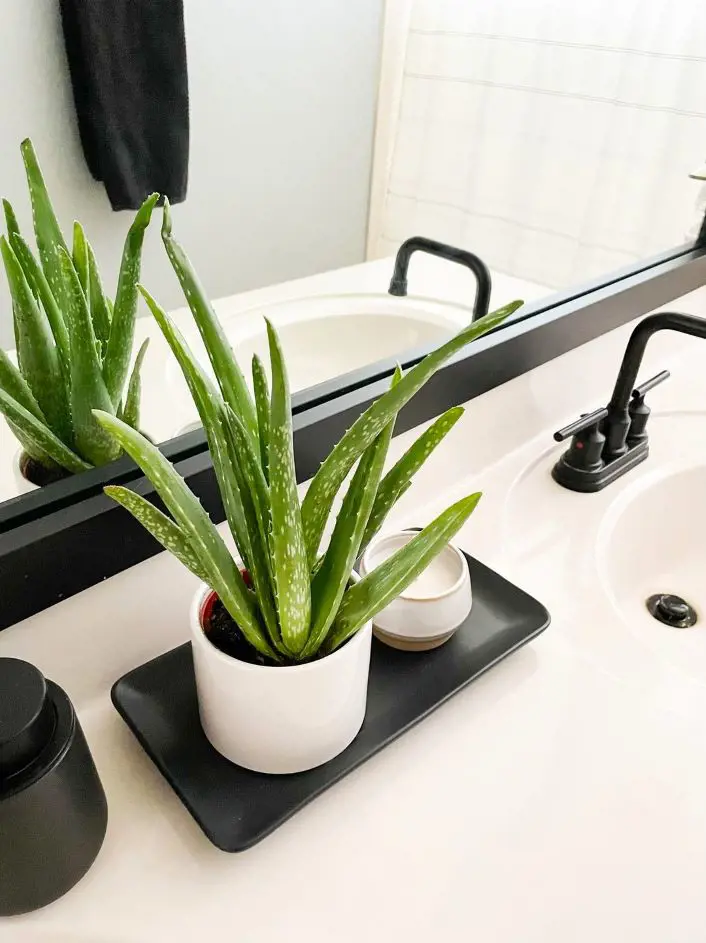
The spiky, resilient aloe vera isn't just a decorative wonder for your home; it's a natural healer, offering soothing gel for burns, cuts, and sunburns. But how do you keep this desert native thriving indoors, where the climate is far from its arid origins? Worry not, plant parent, because aloe vera care is quite simple.
Bright Indirect Light
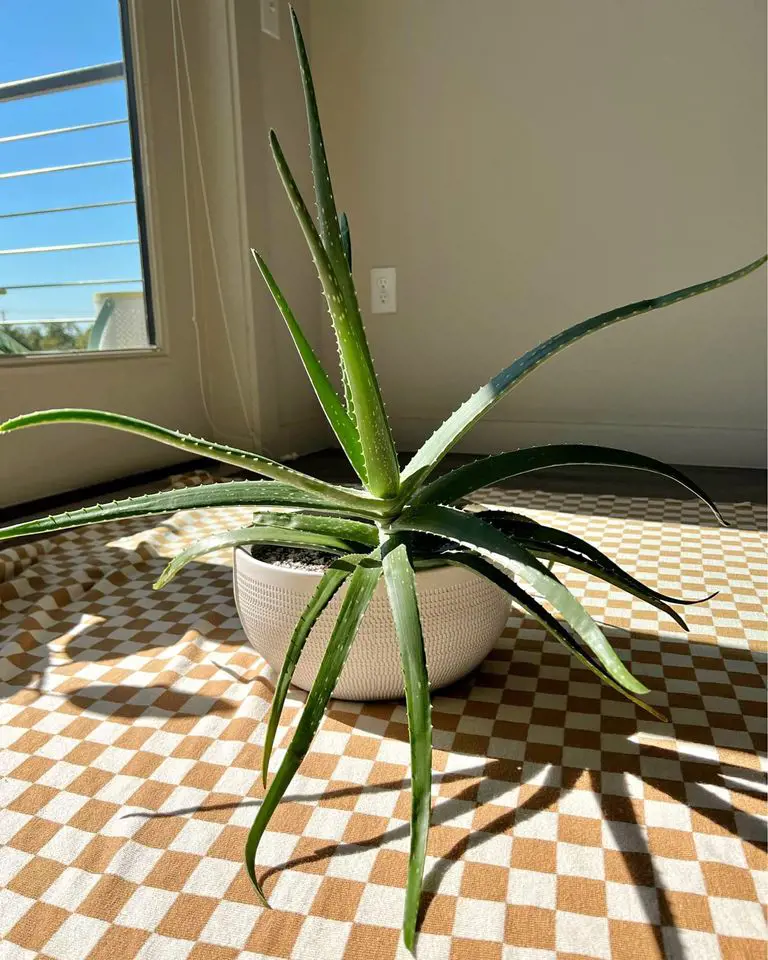
Instead of harsh sun, think bright, indirect light like a sunny window with sheer curtains. South-facing windows are great, but avoid the scorching midday sun. Rotate your aloe pot every few weeks to ensure even growth and prevent it from leaning toward the light source.
Watering Wisdom

Let the soil dry completely between waterings, usually once every two weeks in the summer and once a month in the winter. Stick your finger in the soil—drying an inch down means it's thirsty time. Consider using a humidifier or placing your aloe near other houseplants to increase humidity, especially during the winter. Dry air can make the leaf tips brown.
Pot It Up
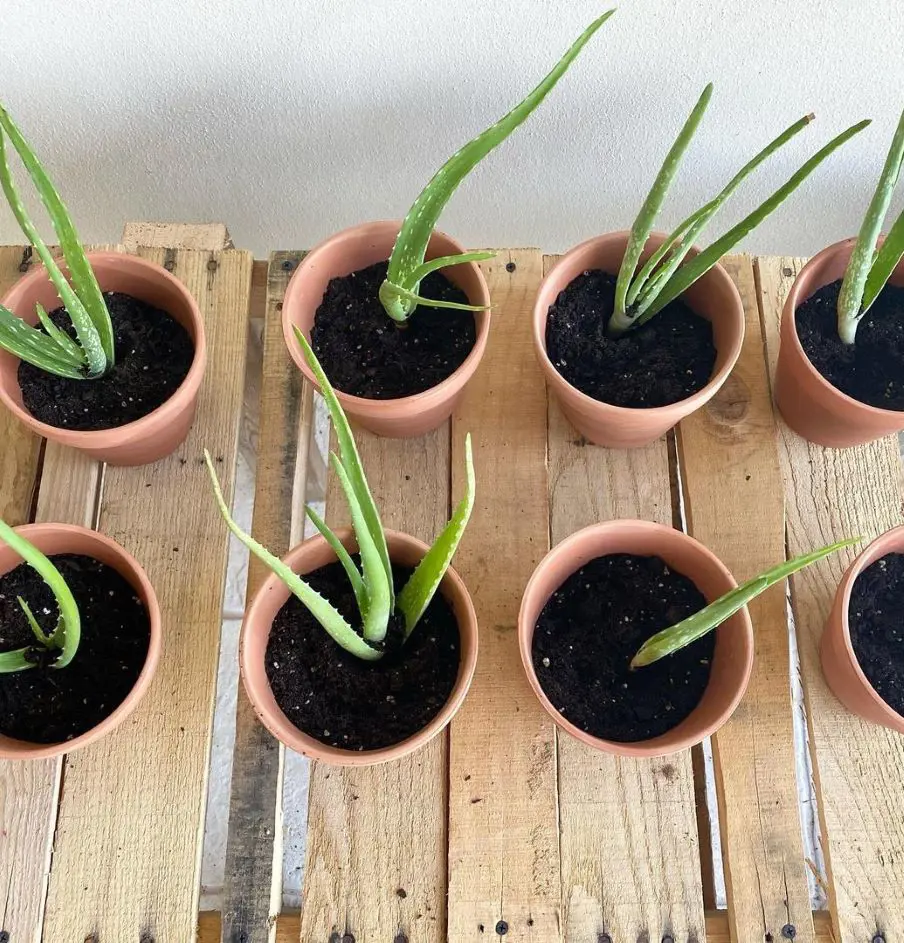
Choose a pot with drainage holes to prevent waterlogging. Terracotta pots breathe well and add a rustic touch. Opt for a pot slightly larger than the root ball, allowing room for growth but not too much excess soil that holds moisture.
Bonus TLC
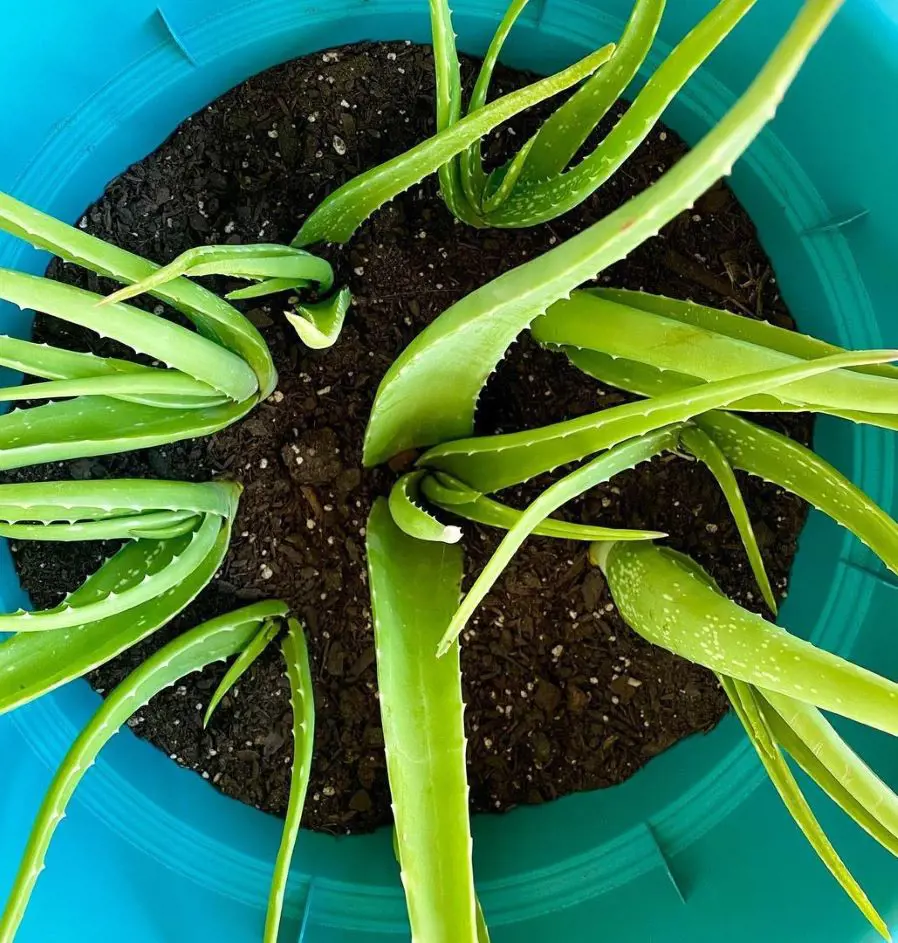
- Fertilize sparingly: A light feeding of cactus fertilizer once a month during spring and summer is enough.
- Harvest with care: When leaves are mature, cut them at the base with a sharp knife. You can use the gel inside for sunburn relief, cuts, and dry skin.
- Pups galore: Aloe vera loves to send out baby plants called pups. You can separate and pot them to grow your own aloe family.
Beyond the Basics

- Temperature: Aim for warm temperatures (65–80 °F). Avoid placing your aloe vera near drafty doors or vents, and keep it away from radiators or fireplaces in winter.
- Pests and Diseases: Thankfully, aloe vera is relatively resistant to pests and diseases. However, keep an eye out for mealybugs and root rot (caused by overwatering).
- Signs of Trouble: Browning leaves can indicate overwatering or sunburn. Shriveling leaves usually mean underwatering. Adjust your watering habits accordingly.
Aloe Vera Care Outdoors
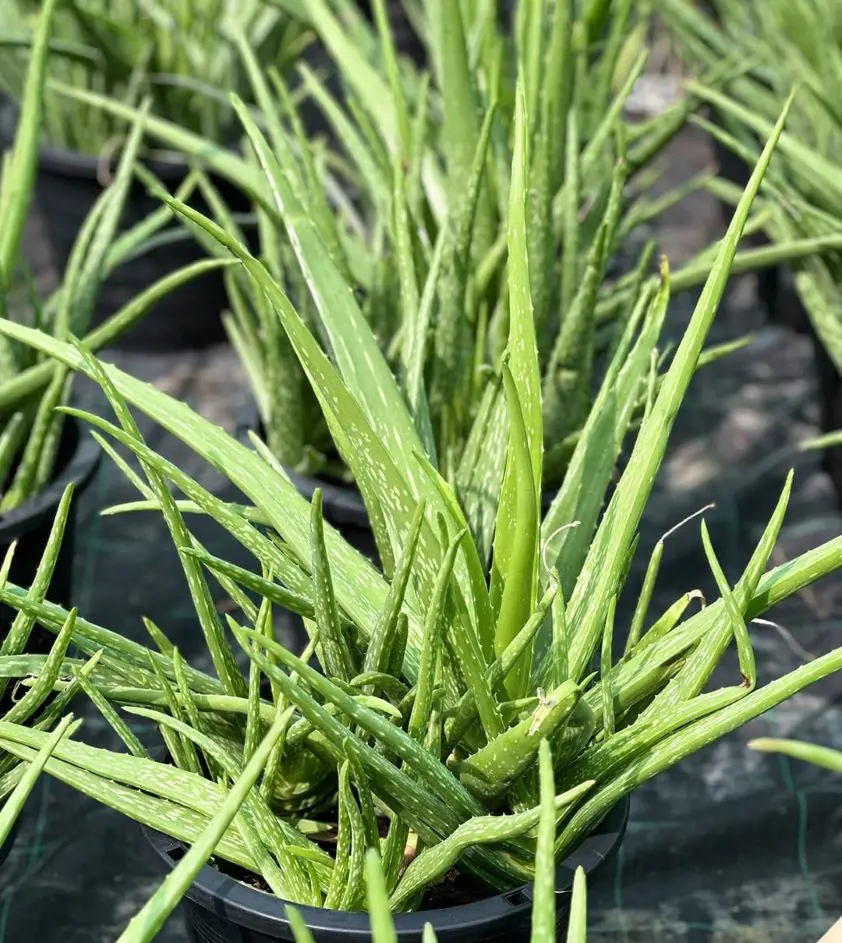
Aloe vera, with its spiky charm and soothing gel, isn't just for indoor windowsills anymore. It thrives outdoors too, adding a touch of greenery and natural healing to your garden or patio. But remember, this desert native has its preferences, so let's dive into the details of outdoor aloe vera care.
Sun Seeker
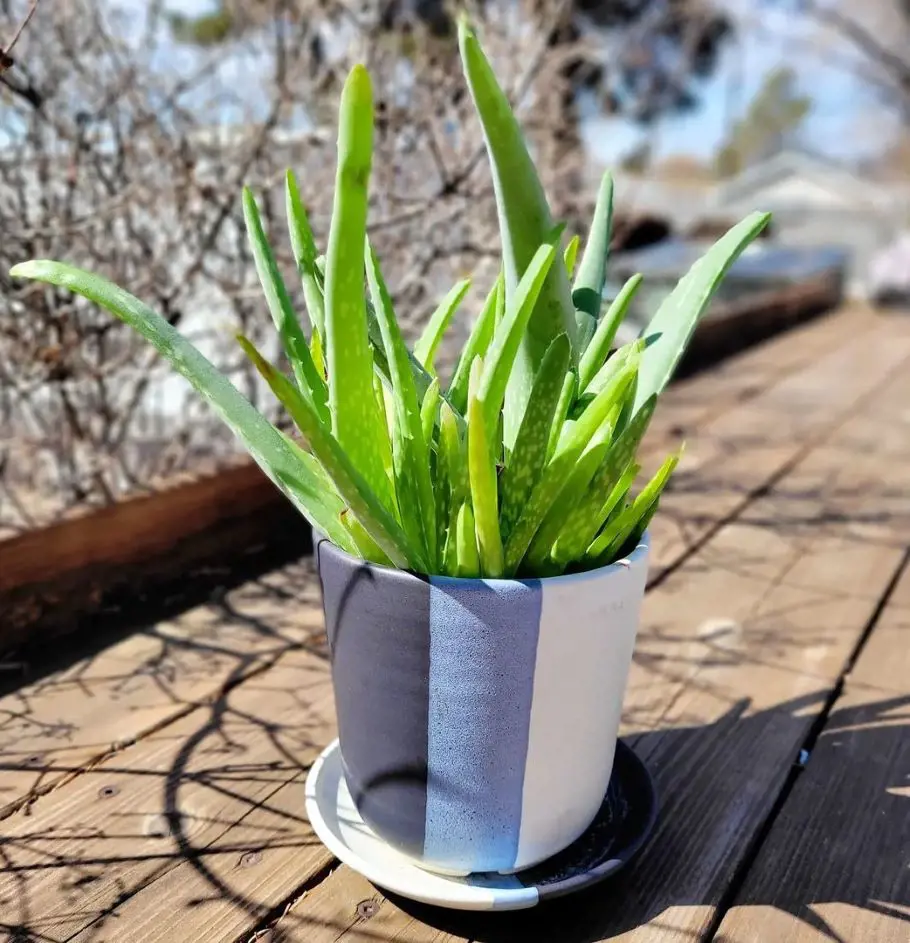
Unlike its indoor cousin, outdoor aloe vera loves full sun. However, in scorching climates, consider providing some afternoon shade, especially during the hottest part of the day. Think of it like giving your aloe a siesta under a patio umbrella.
If your aloe has been living indoors, introduce it to the full sun gradually. Think of it like acclimating your desert friend to a brighter vacation spot. Start with a few hours of morning or late afternoon sun and gradually increase exposure over a week or two.
Watering Wisdom
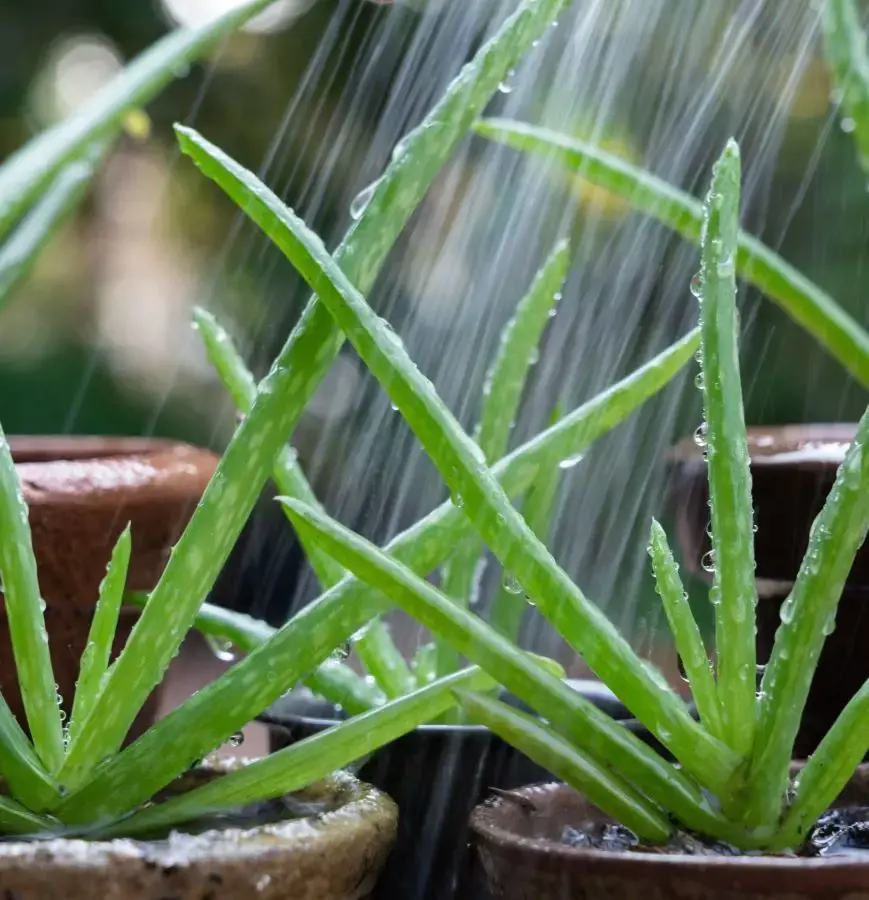
Let the rain do the watering for you. Heavy downpours are perfect, so hold off on watering until the soil dries out a bit. In periods without rain, mimic the desert by watering deeply but infrequently. Think of giving your aloe a good soak, then letting the soil dry completely before watering again. Aim for once a week in hot weather and once every two weeks in cooler months. Remember, overwatering is the enemy, so err on the side of dryness.
Potting Perfection
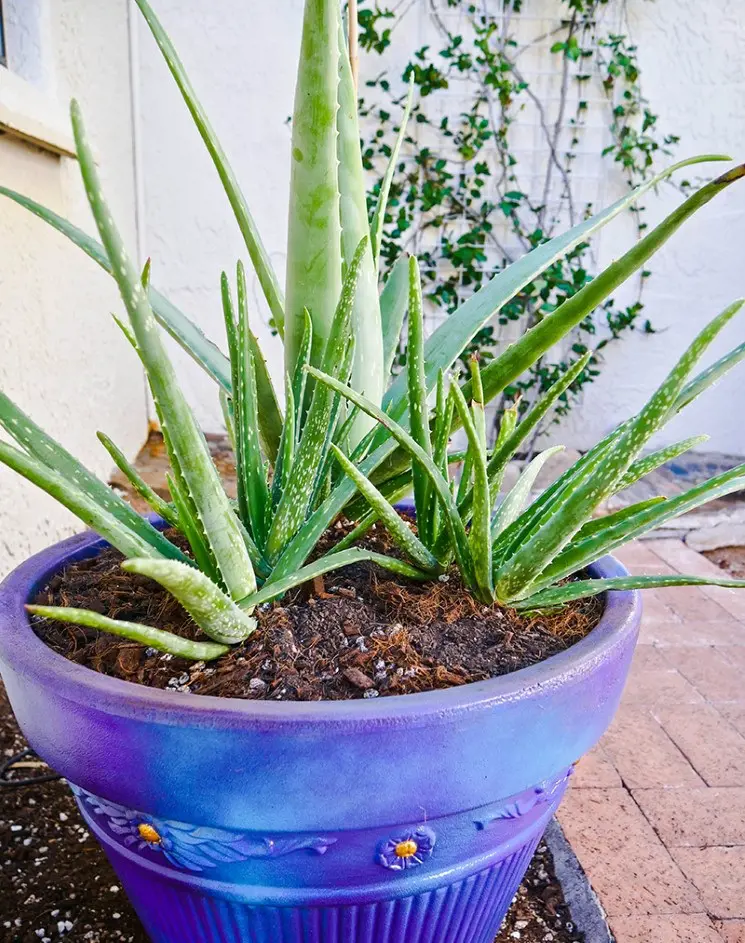
Choose a pot with drainage holes to prevent waterlogging. It is like giving your aloe vera's roots plenty of breathing room to avoid drowning. Opt for well-draining soil, like cactus mix or a DIY blend of potting soil, perlite, and sand. Think of it as creating a mini-desert paradise for your aloe's roots. Raised beds are also ideal for good drainage.
Bonus Tips
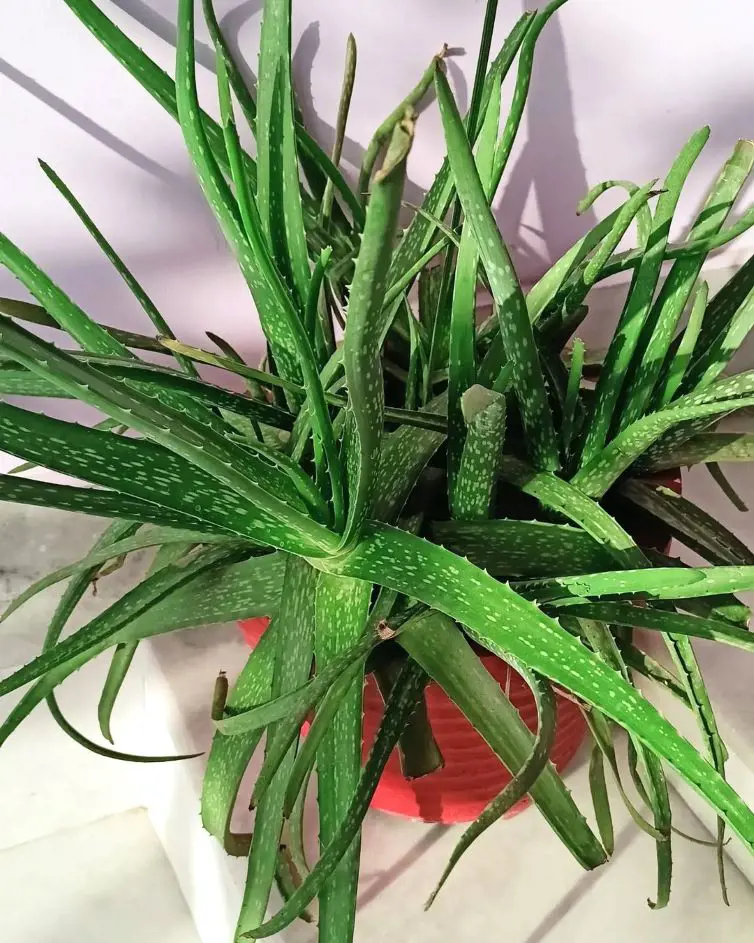
- Fertilize sparingly: A light feeding of cactus fertilizer once a month during spring and summer is enough.
- Harvesting: When leaves are mature, cut them at the base with a sharp knife. The gel inside is your aloe's treasure trove for soothing sunburns, cuts, and dry skin.
- Pups galore: Watch out for baby aloe plants called pups! You can separate and pot them to grow your own aloe family. Think of it as expanding your desert oasis.
Additional Considerations
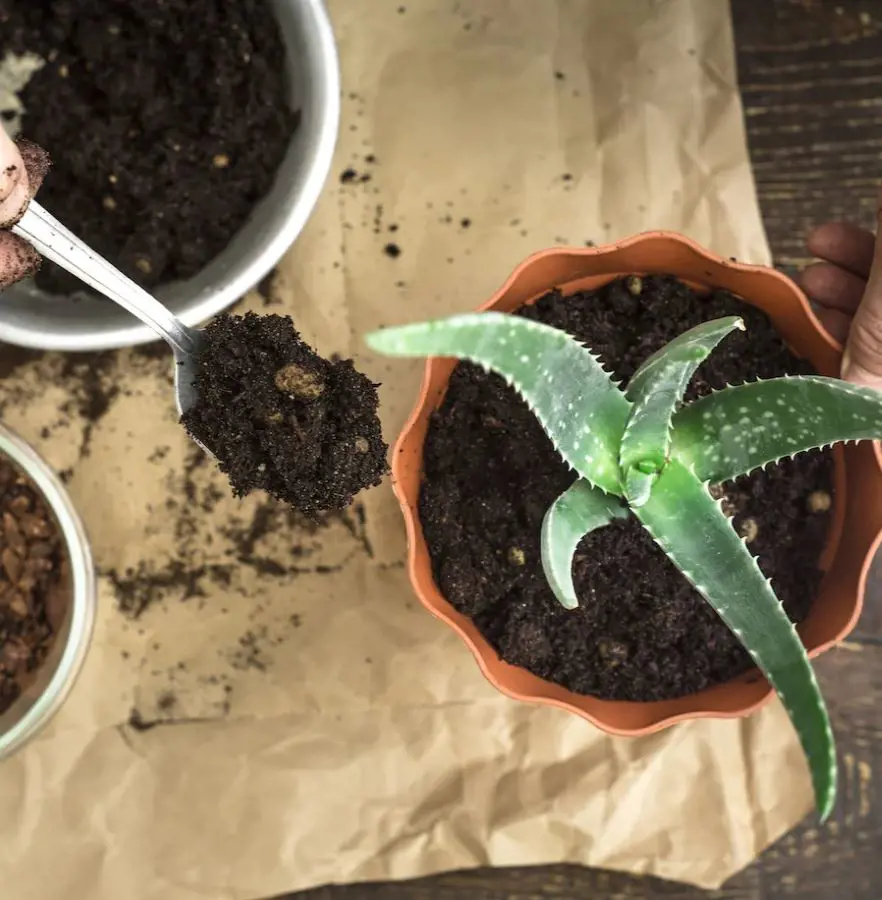
- Temperature: Aloe vera prefers warm temperatures (65–80 °F). Bring it indoors before the first frost if you live in a colder climate.
- Pests and Diseases: Relatively pest-resistant, but keep an eye out for mealybugs and root rot (caused by overwatering).
- Repotting: Every 2-3 years, as needed, into a slightly larger pot with fresh, well-draining soil.
With these tips, your aloe vera will thrive outdoors, adding a touch of spiky charm and natural healing to your space. Remember, it's all about mimicking the desert: plenty of sun, well-draining soil, and infrequent watering. Aloe vera is a great plant for desert landscaping ideas to try at home.
Brief Difference Between Indoor and Outdoor Care
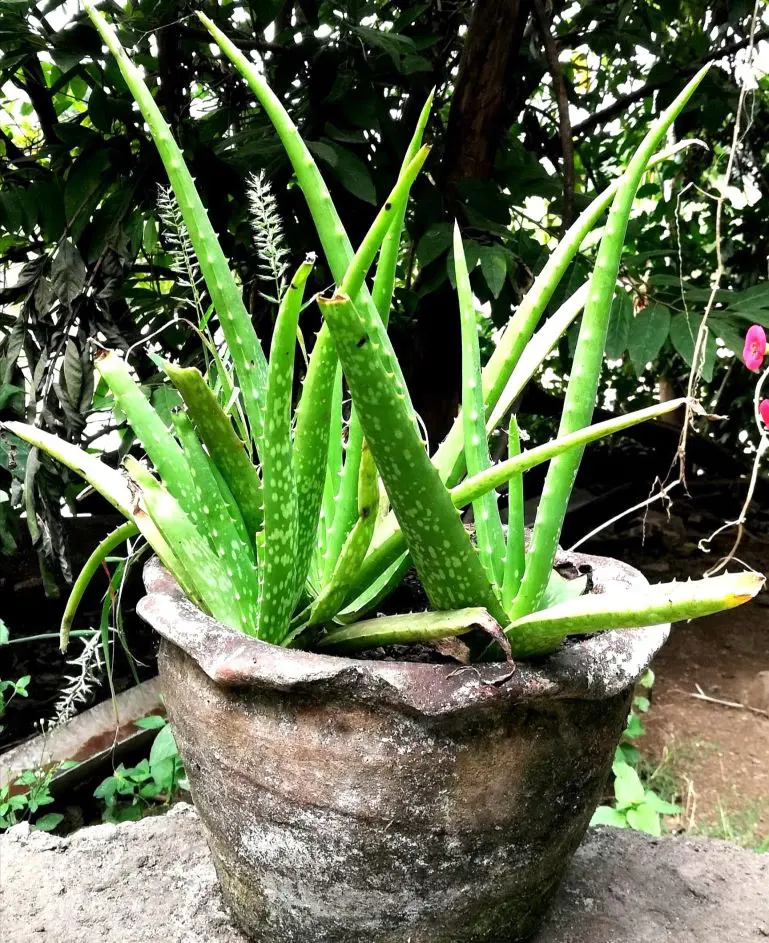
The major differences between aloe vera care tips for indoors and outdoors boil down to sun exposure, watering, and temperature considerations.
Sun:
- Indoors: bright, indirect light; avoid harsh midday sun.
- Outdoors: Full sun is okay, but provide afternoon shade in scorching climates.
Watering:
- Indoors: Let the soil dry completely between waterings.
- Outdoors: Water during dry spells, but let rain do the work after downpours.
Temperature:
- Indoors: Bring indoors before frost.
- Outdoors: No need to bring in unless freezing temperatures are expected.
Bonus:
- Indoors: Rotate the pot for even growth; consider humidifying in the winter.
- Outdoors: Choose well-draining raised beds if possible.
In essence, outdoor aloe vera enjoys the full desert experience of full sun, occasional rain, and warm temperatures. Indoor aloe vera needs a similar approach but with softer, indirect light, infrequent watering, and attention to humidity and temperature extremes.
Common Aloe Vera Problem
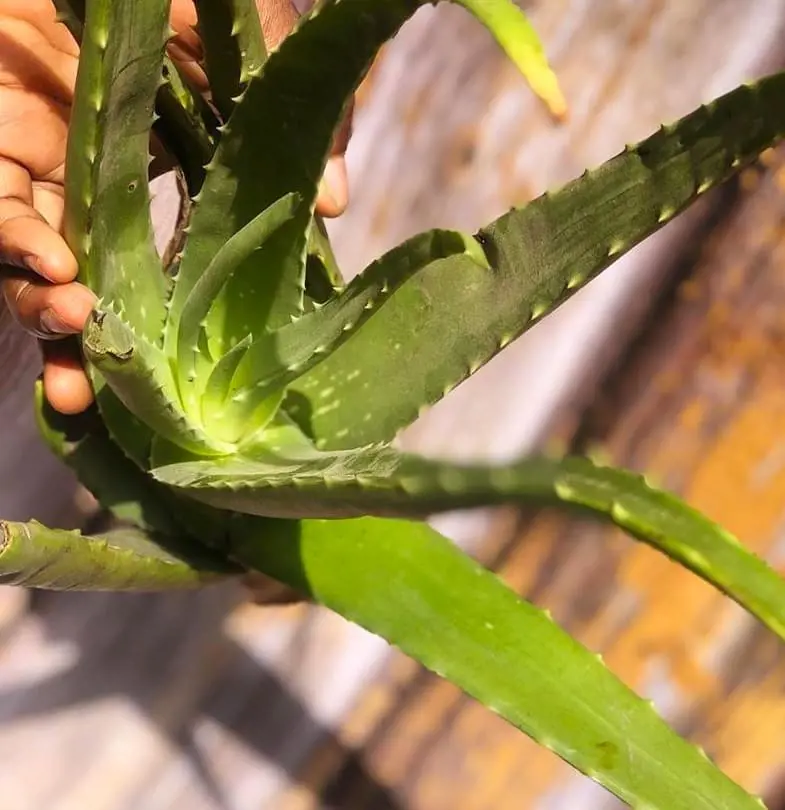
Even the toughest desert dwellers like Aloe vera can face some challenges. Here's a breakdown of the most common problems you might encounter, indoors and outdoors:
Overwatering
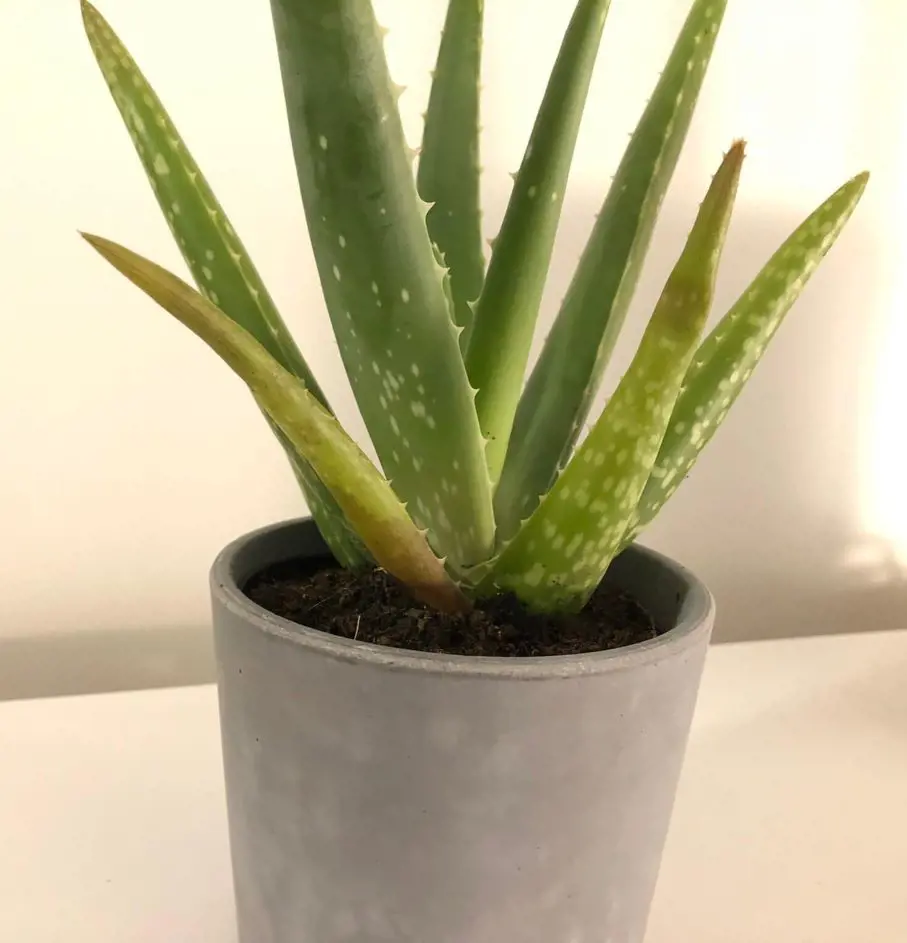
This is the arch-nemesis of all aloe veras! Indoors and outdoors, soggy soil leads to root rot, wilting leaves, and a sad, droopy plant.
-
Indoors: Stick your finger in the soil—drying an inch down means it's watering time. Avoid frequent watering, especially in winter.
-
Outdoors: Let the rain do the watering—only water when the soil dries out completely, even during hot weather.
Sunburn
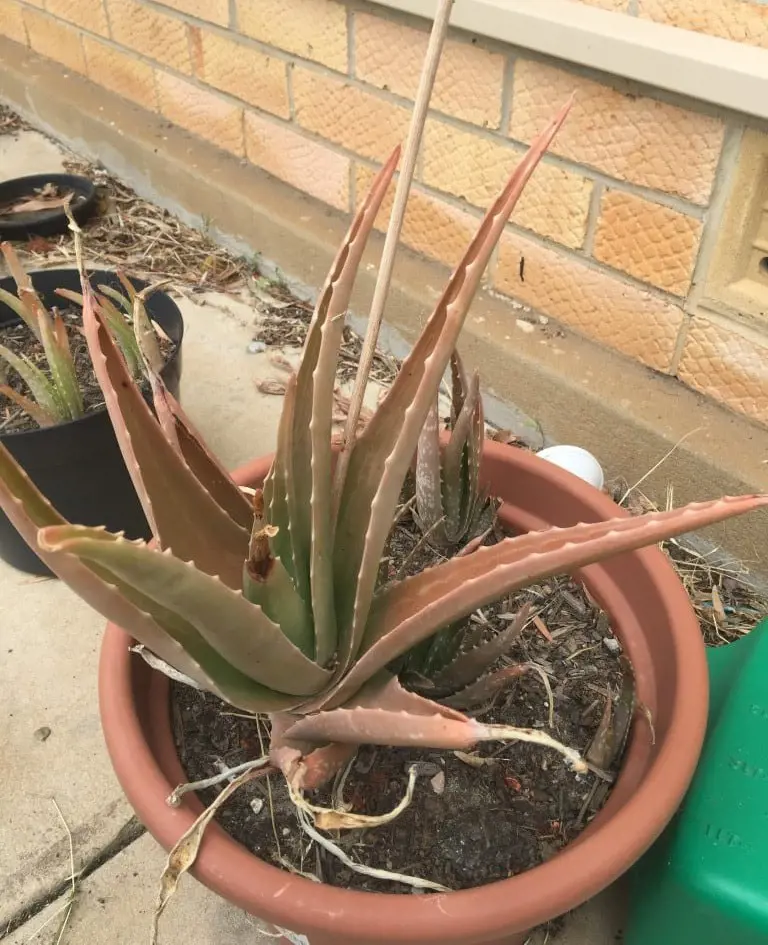
While outdoor aloes love full sun, too much direct exposure can scorch their leaves. Indoor aloes can also suffer from the harsh midday sun through south-facing windows.
-
Outdoors: Provide afternoon shade in scorching climates.
- Indoors: Filter south-facing windows with sheer curtains or move your aloe to a brighter, indirect light spot.
Underwatering
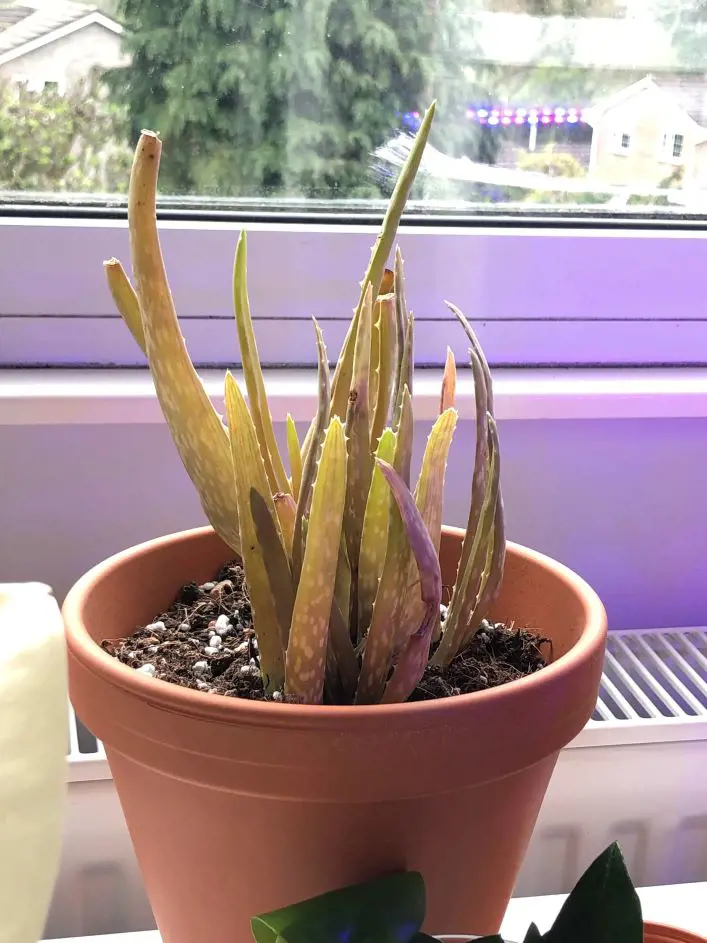
While infrequent watering is key, neglecting your aloe completely can lead to shriveling leaves and stunted growth.
-
Indoors: Stick to your watering schedule, adjusting based on the season and pot size.
- Outdoors: During periods without rain, especially in hot weather, give your aloe a deep soak and then let the soil dry before watering again.
Pests and Diseases
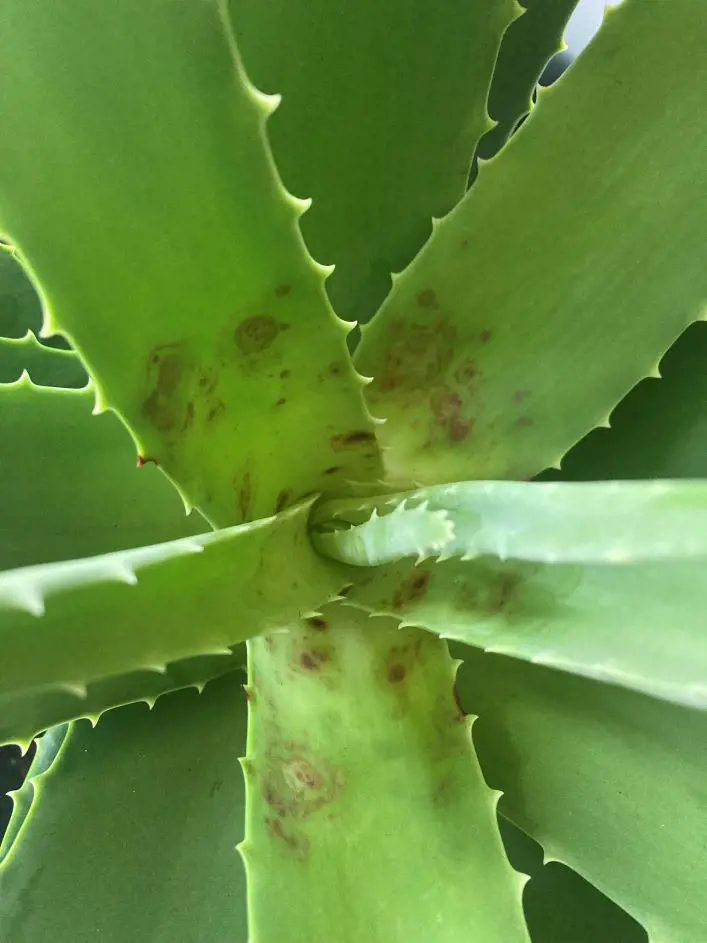
Aloe vera is generally pest-resistant, but mealybugs can occasionally appear. Root rot is also a concern, especially with overwatering.
-
Indoors: Treat mealybugs with insecticidal soap. Check for signs of root rot (mushy roots, foul odor) and repot in fresh, well-draining soil if needed.
- Outdoors: Inspect regularly for mealybugs and treat as needed. Avoid overwatering to prevent root rot.
Additional Issues
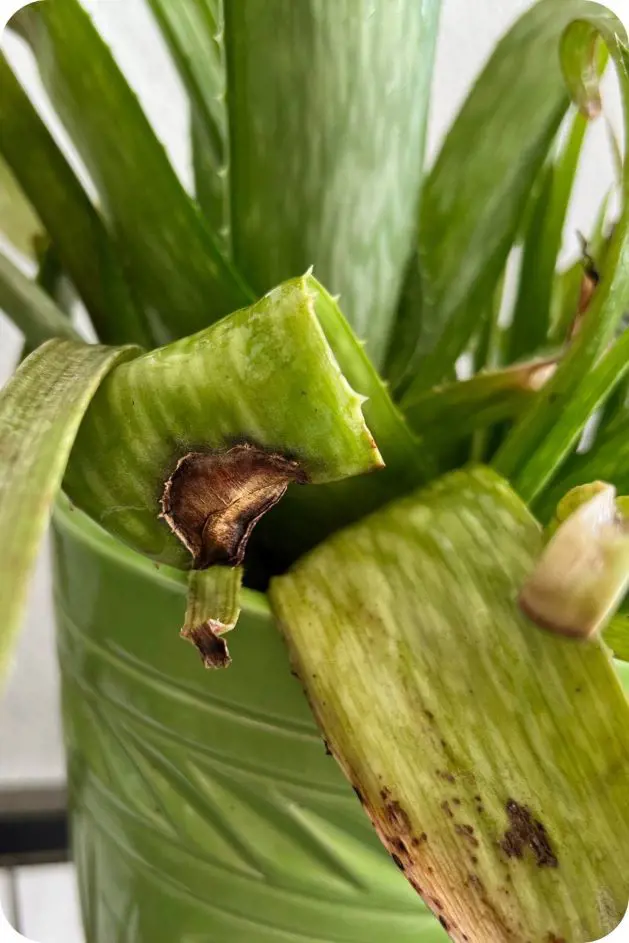
-
Browning Leaves: This can indicate overwatering, sunburn, or even nutrient deficiency. Assess your watering habits and sun exposure, and consider fertilizing lightly with cactus fertilizer during spring and summer.
- Pups not Thriving: Separating pups too early or not providing them with enough light and well-draining soil can hinder their growth. Ensure they have their pots with proper drainage and give them enough light.
How to Grow Aloe Vera?

Aloe vera, with its spiky charm and a treasure trove of natural healing gel, is a must-have for any plant lover. But how do you embark on this prickly journey? Here's your guide to cultivating your spiky oasis:
Starting Points
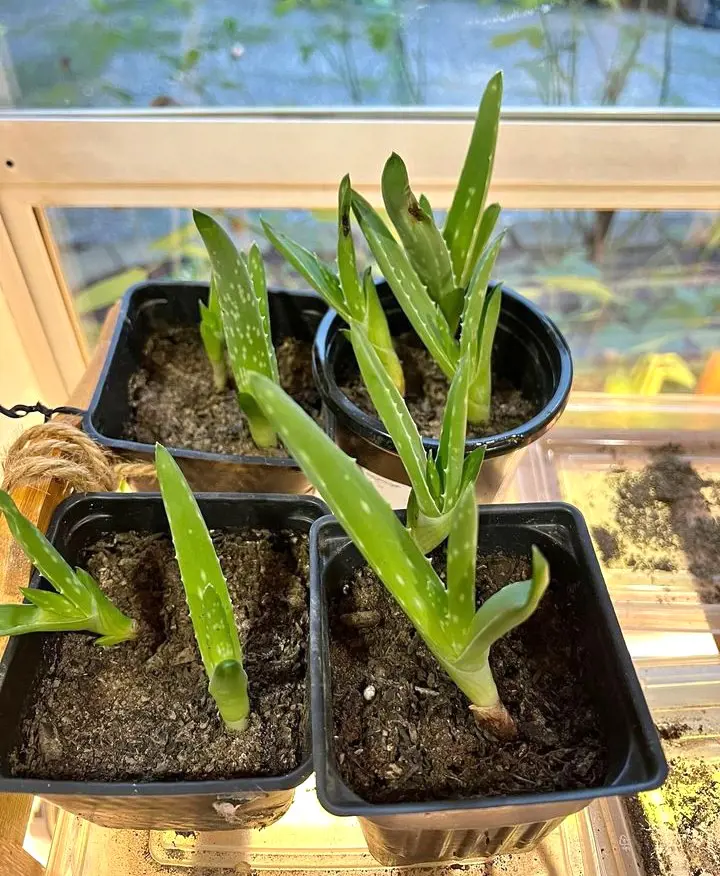
- Seeds: While possible, starting with seeds is a slower process and requires specific conditions. Opting for established pups or mature leaves is easier for beginners.
- Pups: These baby aloe plants sprout from the base of the mother plant. Separate them carefully, ensuring they have some roots attached, and pot them individually.
- Leaf cuttings: Choose mature, healthy leaves from the base of the plant. Cut them cleanly with a sharp knife and let the cut end dry for a day or two before planting.
Planting Essentials
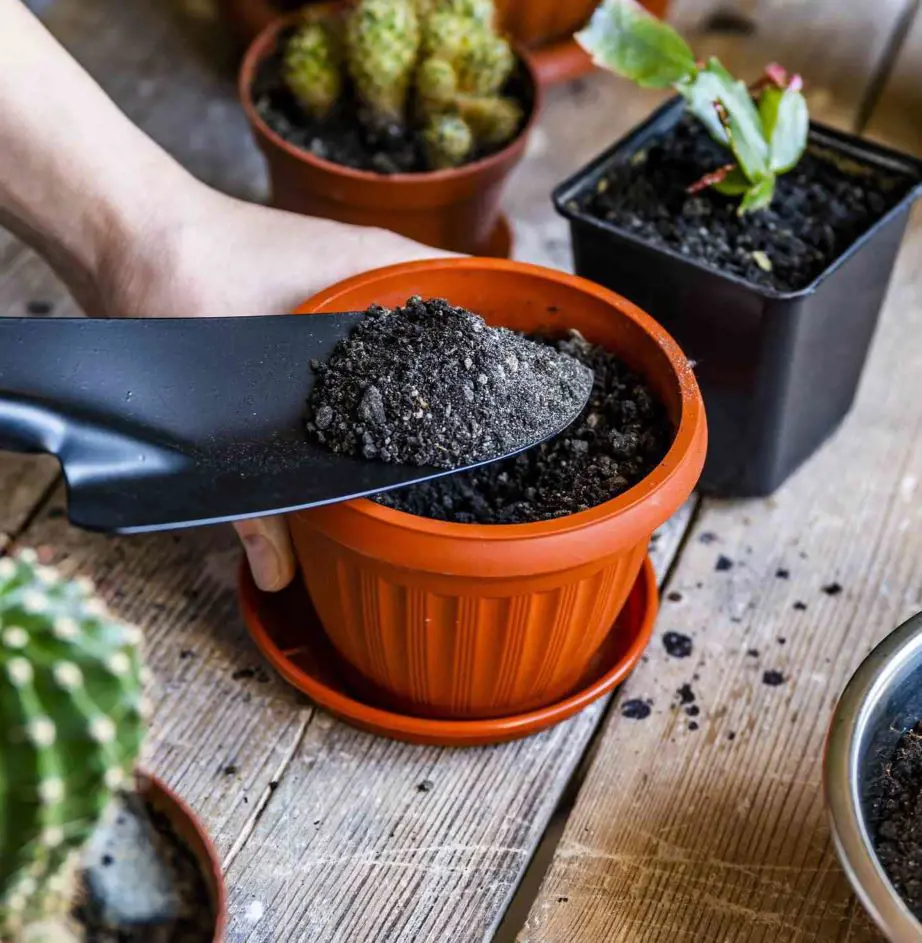
- Pot: Choose a pot with drainage holes to prevent waterlogging. Terracotta pots are ideal for their breathability. Opt for a pot slightly larger than the root ball of your pup or leaf cutting.
- Soil: Well-draining soil is crucial. Cactus mix is perfect, or DIY a blend of potting soil, perlite, and sand for optimal drainage.
Planting Process
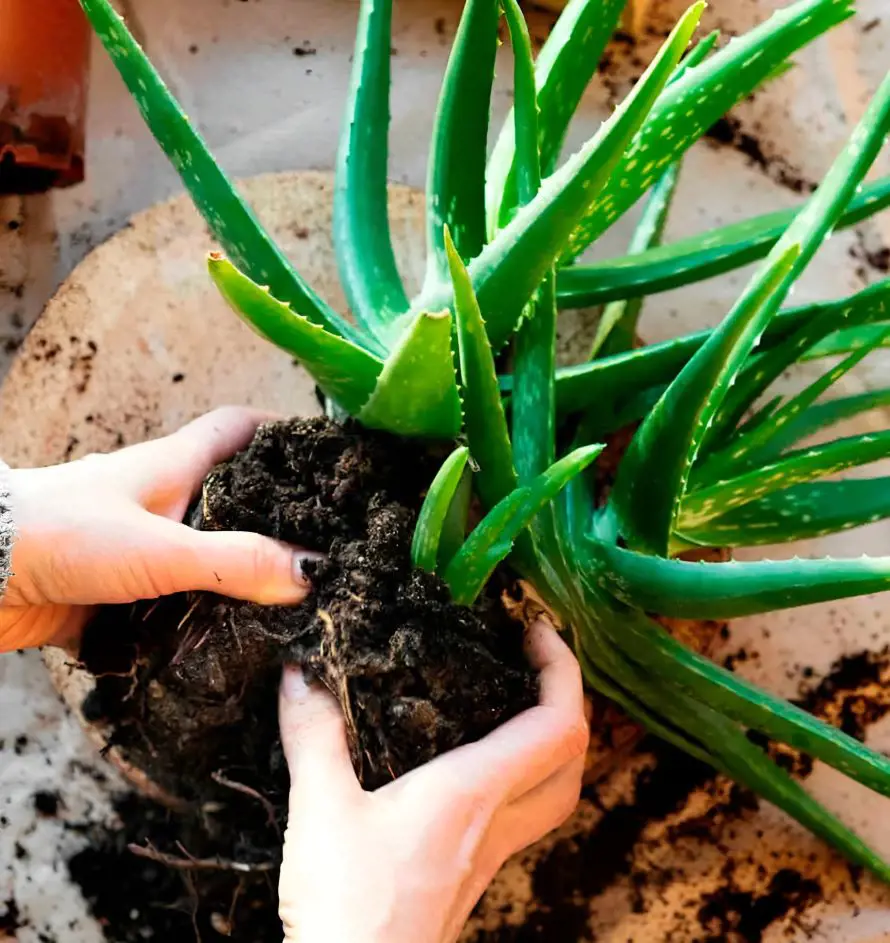
- Fill the pot with soil, leaving some space at the top.
- For pups, gently place them in the soil and cover the roots.
- For leaf cuttings, lay the cut end on the soil surface and cover the base with a thin layer of soil.
- Water lightly to settle the soil and avoid overwatering.
How To Propogate Aloe Vera?
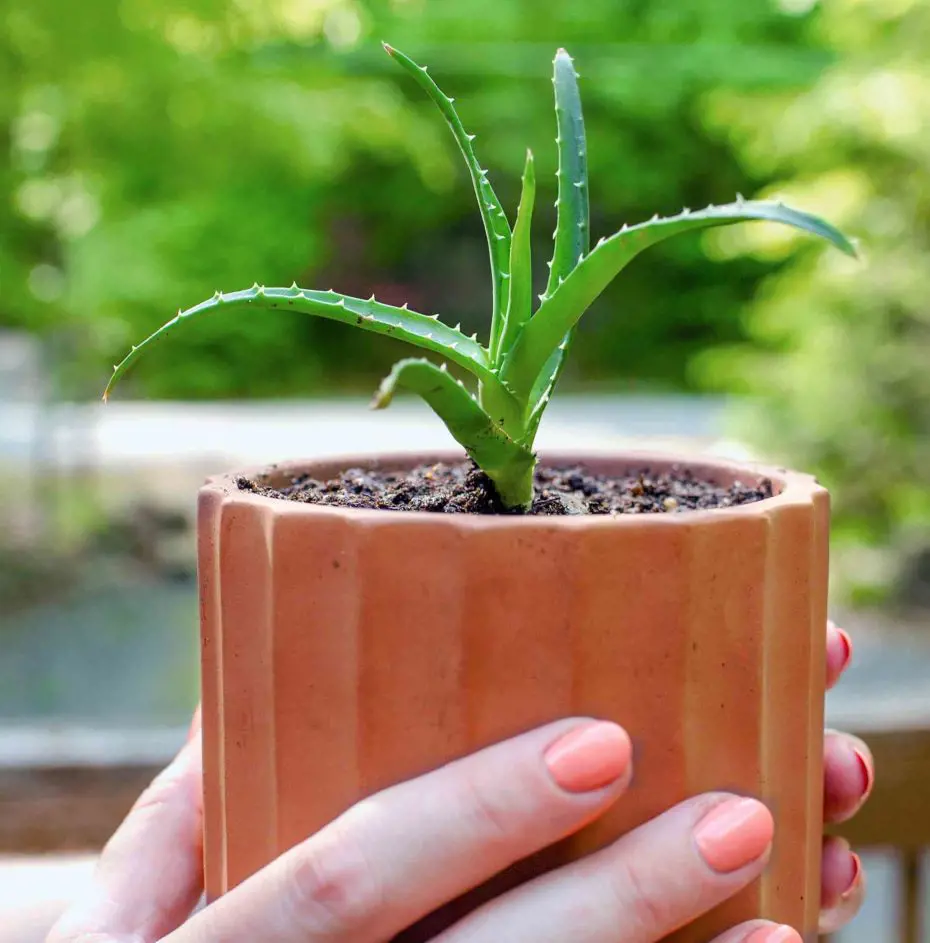
Aloe vera is a generous plant, readily multiplying itself through three main methods: pups, leaf cuttings, and stem cutting. Here's how to propagate your aloe and create a whole family of spiky friends.
- Pups: Gently detach those cute little plantlets from the base and pot them up in well-draining soil.
- Leaves: Cut a mature leaf, let it dry for a day, then stick the calloused end in the soil and wait for roots to sprout.
- Stem Cuttings: Slice a stem section, dry it a day, plant it in the soil, and keep the soil lightly moist until roots appear.
Recent posts
Plant Care
Plant Care
How To Take Care Of An Orchid Plant? 11 Tips And Tricks
If you love gorgeous orchids but are worried they're too high-maintenance, don't worry. This guide is like a cheat sheet for orchid newbies. Forget fancy words and confusing schedules — we're talking about how to take care of an orchid pla...
Plant Care
How To Grow and Care For Peace Lily Plant
The Peace Lily is an indoor plant that is most valued for its beautiful and shiny green leaves as well as the white blooms. Hard and tolerant, it’s naturally a low-maintenance addition to your plant collection. If you are confused, let us tell ...
Plant Care
Pothos Plant Care And Growing Guide
Adding a Pothos plant (Devil’s Ivy) to your home benefits the environment and aesthetic of your personal space. It's easy to maintain and is loved for it's ability to enhance indoor air quality by removing toxins like formaldehyde, benzene, and...
Plant Care
Snake Plant Care and Growing Guide
Snake plants require low maintenance, and low light and are almost impossible to kill, making them a perfect plant for beginners and seasoned gardeners. In this guide, we will explore essential care tips and optimal growing conditions for snake plant...
Plant Care
How To Plant, Grow and Care Majesty Palm
The majestic palm, scientifically known as Ravenea rivularis, makes for a stunning indoor tree with its lush and grand fronds. Originating from Madagascar's river banks, this resilient houseplant is cherished not only for its beauty but also for its ...
Plant Care
How To Grow And Care For A Hosta Plant
Hosta plants are widespread perennials, often grown for their beautiful and diverse foliage. They are extremely easy to care for and can thrive in various conditions, particularly shade or semi-shade. These hardy plants can last for many years and re...
